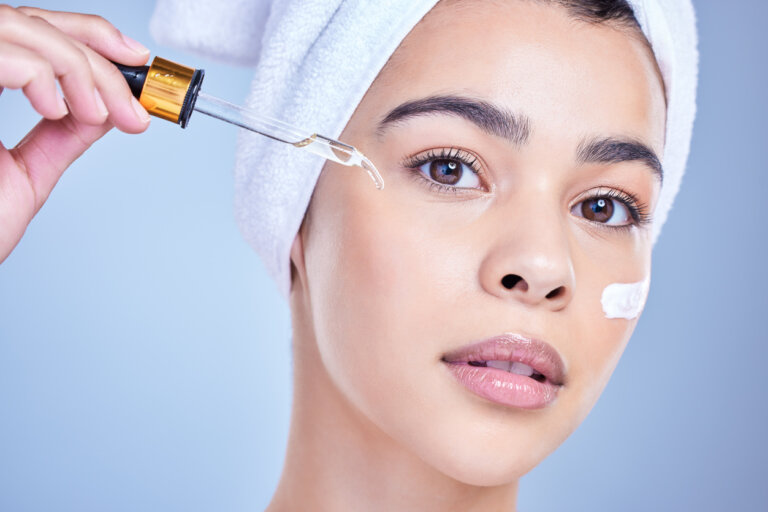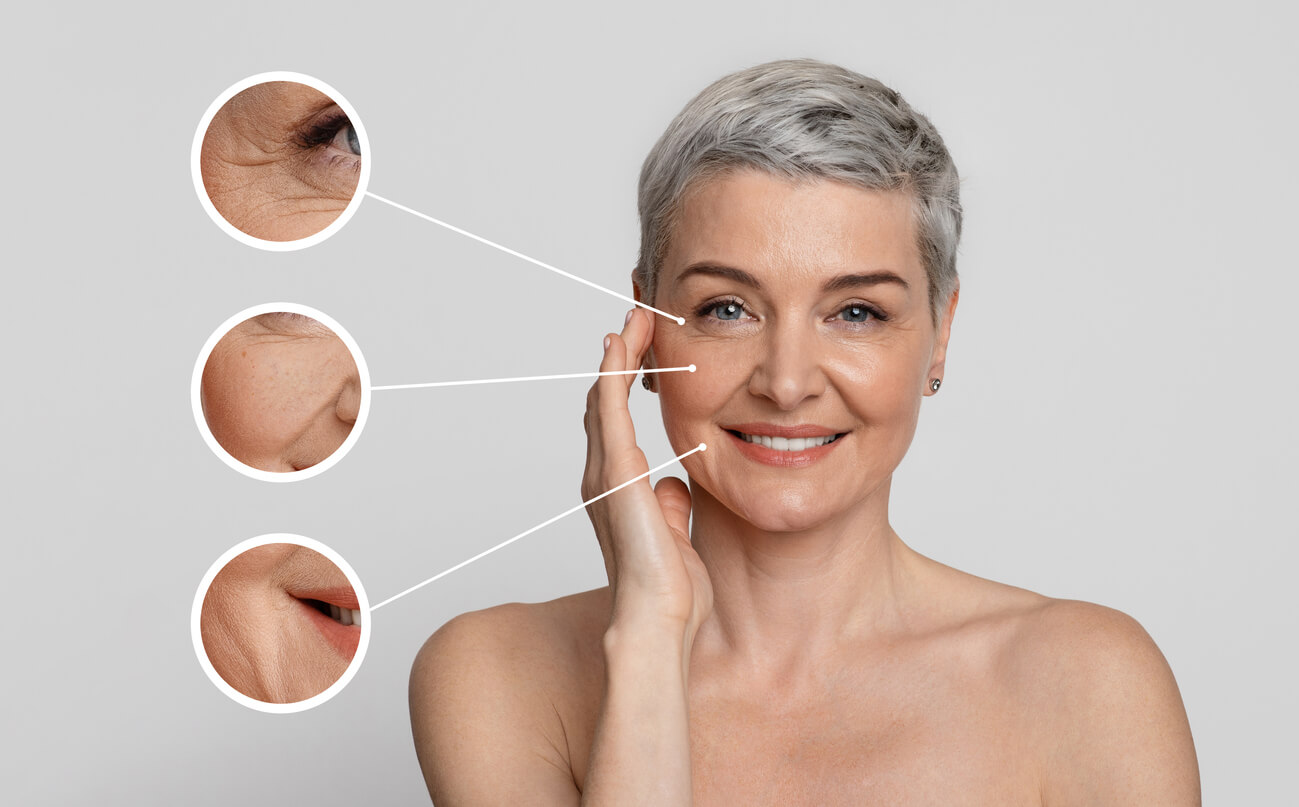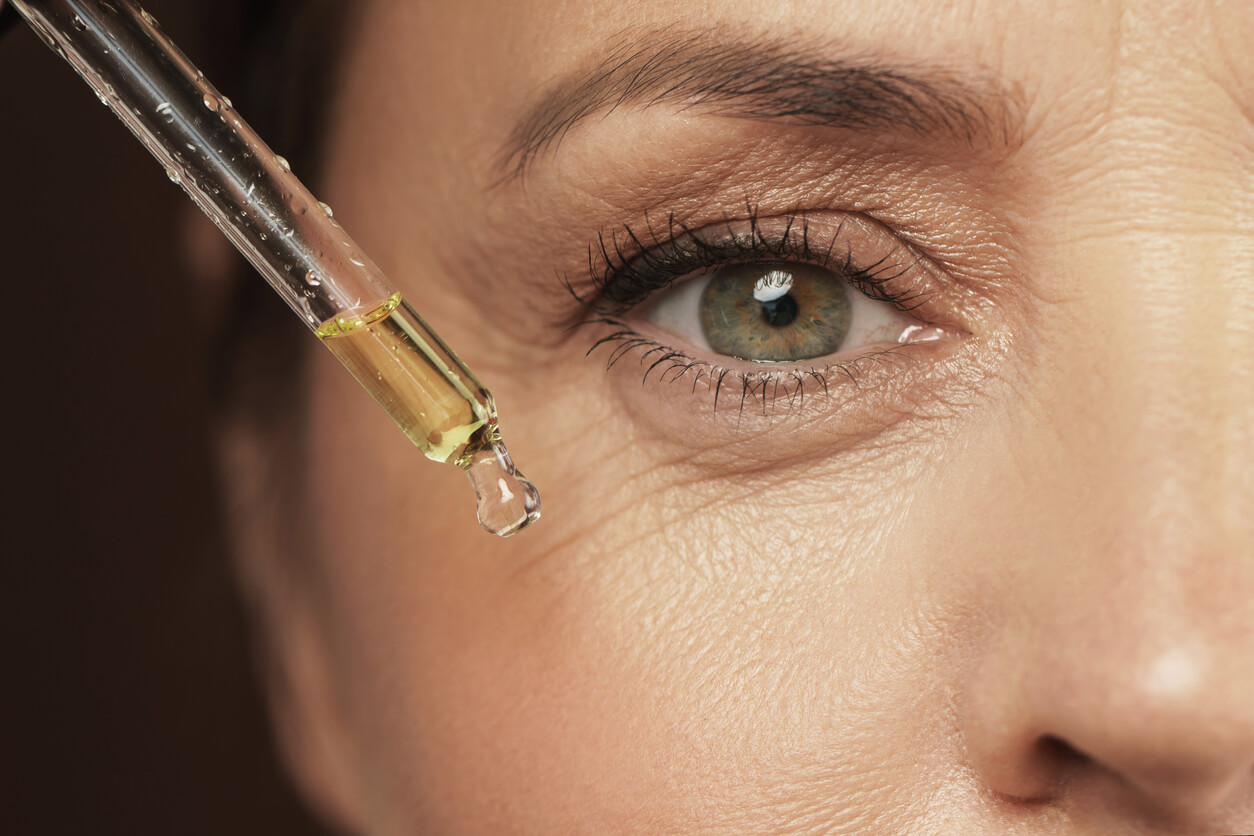Retinal: The New Anti-aging Hero in Skin Care

Retinal is one of the most potent anti-aging skin care ingredients you can find today. This vitamin A derivative can help you reduce wrinkles, improve skin texture, and stimulate collagen production. Learning to integrate it into your facial care routine can bring you many benefits.
We live in an age where, thanks to scientific advances and the accessibility of innovative products, more and more people are able to enjoy glowing, radiant skin. And while you may already know about the advantages of using retinol, today we introduce you to the properties of another member of the retinoid family: retinal.
You may also like to read: : The 7 Most Common Mistakes When Removing Makeup and How to Do It Correctly
3 benefits of integrating retinal into your beauty routine
In the world of skin care, the search for products that are effective and go beyond marketing promises can be endless. If you want to prevent and treat the signs of skin aging, integrating a powerful retinal serum into your facial care routine may make the difference you’ve been looking for. Here are its main benefits:
1. It reduces the signs of skin aging

With consistent use and proper sun protection, retinal, also known as retinaldehyde, can completely transform your skin. It stands out for its impressive antioxidant capacity that makes it a valuable ally in the fight against the signs of skin aging. This antioxidant action lies in its effectiveness in neutralizing free radicals, unstable molecules that can cause cell damage and contribute to premature skin aging.
By also promoting cell renewal, retinal accelerates the skin’s natural exfoliation process. This removes dead and damaged cells from the skin’s surface, revealing a smoother, more even complexion. Similarly, as shown in a recently published study, the use of topical retinoids (including retinoic acid and retinal) can help reduce fine lines and wrinkles, helping to restore a youthful look to the skin.
2. It improves skin texture and tone
As mentioned, retinal boosts the cell renewal process in the dermis, which means dead cells shed more quickly, revealing fresher, more radiant skin. This gentle exfoliation helps smooth skin texture, diminishing the appearance of enlarged pores and promoting a more even surface.
Similarly, retinaldehyde has also been shown to be effective in reducing hyperpigmentation, such as dark spots and discoloration caused by sun exposure and aging. By targeting stubborn pigmentation, retinal helps to even out skin tone and give a brighter, more uniform appearance.
Research has also shown that after 3 months of using a 0.1% retinaldehyde face cream, participants reported an improvement in signs of photoaging and skin texture, plus an increase in hydration.
3. It stimulates collagen production
Collagen is a key protein for skin structure and firmness. As its production decreases over time, this can lead to the appearance of wrinkles, sagging and other signs of skin aging. Retinal acts as a potent stimulant of collagen synthesis, promoting skin renewal and revitalization.
By increasing collagen production, the use of topical retinaldehyde can help firm and tone the skin, reducing sagging and improving its appearance. This can translate into a more defined facial contour and a smoother, more youthful complexion.
Tips for incorporating retinal into your skin care routine

Now that you know some of the main benefits of retinal, it’s important to learn how to incorporate it into your facial routine. Remember that, as it’s one step closer to the active form of vitamin A, retinaldehyde is more potent and effective than retinol. Here are some general guidelines to follow to help you achieve the desired results.
- Start gradually: If this is the first time you are introducing retinal into your skin care routine, you should start gradually to help avoid possible irritation. Start with a low concentration and increase the frequency and concentration over time as your skin adapts.
- Use sunscreen: Due to its exfoliating effect, retinaldehyde can make your skin more sensitive to sunlight. Therefore, it’s crucial to use sunscreen during the day to protect your skin from UV damage.
- Apply at night: As it helps stimulate cell renewal during the skin’s nightly regeneration process, retinal should only be applied at night.
- Combine with moisturizers: Since retinal can sometimes cause dryness or flaking, it’s advisable to combine it with moisturizers rich in hyaluronic acid or glycerin to keep the skin well hydrated.
- Be consistent: Always apply your retinaldehyde product according to the manufacturer’s and your dermatologist’s instructions to maximize its benefits. A good nightly facial routine to follow is: cleanser, eye cream, retinal serum then face cream. The use of sunscreen the next day is mandatory.
Integrate retinal into your facial care routine
Today, retinaldehyde is known to be one of the most effective skincare ingredients for a healthy, youthful and radiant complexion. If you would like to integrate it into your routine, consult your dermatologist to learn which retinal products will help you achieve the best version of your skin.
All cited sources were thoroughly reviewed by our team to ensure their quality, reliability, currency, and validity. The bibliography of this article was considered reliable and of academic or scientific accuracy.
- Farris, P. K. (2023). Vitamin A: It's role in cosmeceuticals for antiaging. Dermatological Reviews, 4(6), 268-277. https://onlinelibrary.wiley.com/doi/abs/10.1002/der2.218
- Kwon, H. S., Lee, J. H., Kim, G. M., & Bae, J. M. (2018). Efficacy and safety of retinaldehyde 0.1% and 0.05% creams used to treat photoaged skin: a randomized double?blind controlled trial. Journal of Cosmetic Dermatology, 17(3), 471-476. https://onlinelibrary.wiley.com/doi/abs/10.1111/jocd.12551
- Nayak, K., Katiyar, S. S., Kushwah, V., & Jain, S. (2018). Coenzyme Q10 and retinaldehyde co-loaded nanostructured lipid carriers for efficacy evaluation in wrinkles. Journal of Drug Targeting, 26(4), 333-344. https://www.tandfonline.com/doi/abs/10.1080/1061186X.2017.1379527
This text is provided for informational purposes only and does not replace consultation with a professional. If in doubt, consult your specialist.








